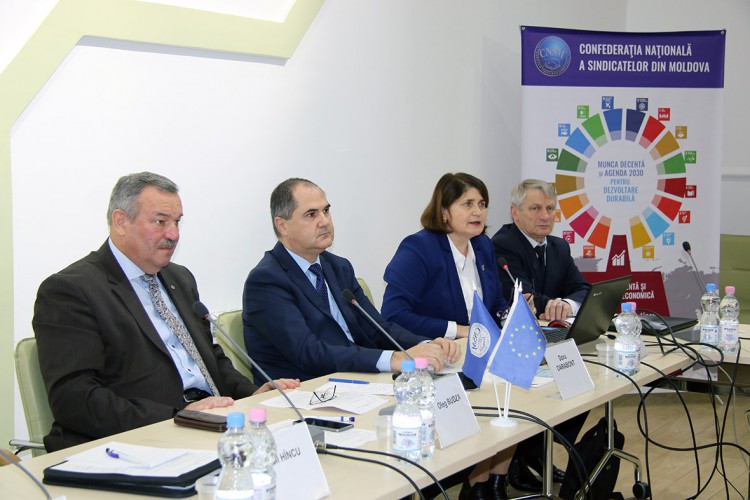The elimination of risk factors, primary condition for prevention of accidents and occupational diseases
“Knowledge and accurate assessment of occupational risks at each workplace is the main objective of work related accidents and diseases prevention activities,” said Oleg Budza, the president of CNSM, at the beginning of the workshop on “Occupational Risk Assessment within Economic Unity”, which took place today at the Labour Institute of CNSM, attended by specialists in the field of occupational safety and health within the national-branch centres, persons responsible in the respective field from the economic units.
According to him, the professional risks encountered in practice as risk factors can be transformed at any time into work accidents, occupational diseases or industrial disasters as a result of the instantaneous disruption of the work process due to the malfunctioning of the system.
Oleg Budza warned that work related accidents or diseases cause serious physical, mental and social trauma, which affects family life due to the suffering produced and equally affects economic agents.
The vice-president of CNSM, Mihail Hîncu, said that today’s event is extremely important, because reality shows that proper attention is not always paid to workplace safety and health at the creation of new jobs. Thus, by organizing this event, was aimed the training of specialists in the field of occupational safety and health from the branches of trade unions, that finally to ensure normal working conditions at the workplace. However, he concluded, not at all enterprises pay enough attention to eliminate risk factors.
The head of the Labour Inspectorate of the Trade Unions, Elena Carchilan, believes that the workshop focusing on the assessment of professional risks at the unit level is of primary importance, because on 27 October, the changes to the Moldova Contravention Code came into force, according to which if the risk factors are not eliminated, employers could be fined with 5000-10000 lei. For this reason, trade unions are proposing to ensure that jobs meet the minimum security requirements, that any workplace to be assessed in the presence of the person working at that workplace.
The participants in the workshop, said Elena Carchilan, are familiar with the methods and techniques for assessing the professional risks, with the elaboration of the Protection and Prevention Plan; they will acquire risk assessment competencies in order to be able subsequently to choose the appropriate protective equipment and to contribute to the job improvement.
Workshop participants were able to study the experience of colleagues across the Prut river in assessing occupational risks, on the methods and techniques used by them, as well as on the principles of selecting protection and prevention measures. A presentation was made by the doctor of engineering, Doru Darabont, General Director of the National Research and Development Institute of Occupational Safety in Bucharest “Alexandru Darabont”, who noted that the institution he leads has a rich experience in injury risk assessment and occupational disease.
He explained that this institute developed the method currently used in more than 99 percent of Romanian enterprises, based on 4 components of the work system: the performer, the work task, the means of production and the work environment. But this method, Doru Darabont said, is not exactly perfect. There are a number of risks to this method, such as new and emerging risks, psychosocial risks, the risks of modern and old technologies. But, in order to make us happy, a modern version of this method is in advanced stage and will be made available to enterprises in the near future.
The local expert, Efim Olaru, PhD, associate professor at the Technical University of Moldova, told the workshop participants about the professional risk factors that are generated by the dangers, how the workplace assessment sheet is done.
Department of Mass Media and International relations of CNSM



